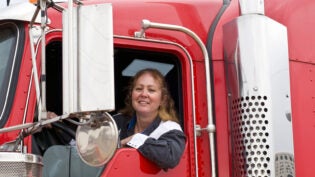Business Leaders: How Are You Combating Ageism in the Workplace?

Ageism is one of the ‘isms’ like sexism or racism, and occurs when someone is discriminated against, not because of their gender or race but because of how old they are.
In the workplace ageism can take many forms, including being refused employment, dismissed, made redundant, or denied a promotion simply because you are considered too old for the job.
And while it is illegal to discriminate against someone in this way, ageism is unfortunately one of the ‘isms’ that is alive and well and actually on the increase, due to our aging population and the need for many people to continue working past retirement age.
How widespread is it?
So just how bad is age discrimination in the workplace? The research shows it’s pretty bad.
According to the American Association of Retired Persons (AARP), one in five workers in the USA between the ages of 45 and 74 claim to have been turned down for a job because of their age. Two in three also say they have witnessed age discrimination in the workplace and one in ten believe they were passed over for promotion, denied training, or laid off because of their age.
And it’s not just in America. According to a recent survey conducted by Australian Seniors about employment issues beyond the age of 50, almost half (47%) of all Baby Boomers believe they were rejected for employment because of their age. More than a third (36%) didn’t apply for a job because they thought they would be discriminated against.
Is there age discrimination in your workplace?
Are you aware of ageism in your workplace? Even if you haven’t experienced it personally, you may have witnessed age discrimination towards a work colleague or, if you are a manager, even practiced it yourself without realizing.
Some of the signs of age discrimination to be aware of in your workplace include:
- Harassment – harassing someone (even in the form of teasing or joking) with the intention of eventually making them quit.
- Favoritism – failing to promote someone and instead giving the position to a younger, less qualified person.
- Demoralization – giving someone menial, unchallenging work to cause them to become disillusioned and retire.
- Isolation – leaving someone out of decision making and important events, and even physically isolating them from their teammates.
- Forced retirement – offering an incentive package to retire or even enforcing a mandatory retirement age (which is illegal in Australia).
- Fake redundancy – eliminating a position and then hiring a younger person under a slightly different job description.
While most of these would probably be grounds for a claim of discrimination on the basis of age, more subtle forms of ageism are also out there that aren’t quite so easy to spot. These can include:
- Discriminatory job advertisements – because you can’t advertise for a person of a certain age (except in certain circumstances such as working in licensed premises), employers sometimes use more subtle phrasing, such as describing their company as ‘young,’ ‘vibrant,’ ‘fresh’ or ‘energetic,’ with the implication that over 50s need not apply.
- Improper interview questions – while you can no longer ask someone in Australia how old they are in a job interview, employers can still get a fair idea of age by asking for an applicant’s complete employment history.
- Lack of policies – having company policies and procedures regarding sexual harassment, but no mention of age discrimination is a good way of ensuring it continues to go unreported in the workplace.
Why ageism is bad for business
Some of the most common reasons given by employers for not wishing to hire mature age employees include ‘Over-qualified,’ ‘Not the right fit for the company culture,’ or ‘Not tech-savvy enough.’
Other perceptions of over 50s include: they won’t stick around, they’ll get sick all the time, or they’re not open to change or learning new things. But the opposite is actually the case, and the advantages of hiring over 50s can far outweigh any negatives.
- People skills – because they come from a time when doing business face-to-face was the norm, over 50s can be better communicators and collaborators than millennials, who prefer to communicate by email and text.
- Tech skills – while over 50s might be perceived as slower to pick up tech skills than millennials, they could be more keen to learn and more likely to seek out training opportunities to address their shortcomings.
- Workplace values – rather than being unhealthy and unreliable, research shows that over 50s actually take less sick days than millennials and are less likely to leave their jobs.
How to combat ageism in your workplace
If you want to protect your company from age discrimination claims and take advantage of the wealth of knowledge and experience mature age workers can bring to the table, there are some simple steps you can take.
Firstly, make anti-discrimination official. Have a company policy drawn up, and educate your staff on the benefits of mature age workers as well as the repercussions of discriminating against them.
Then start walking the talk by hiring, firing and promoting employees on the basis of merit rather than age. Create a level playing field by rating all staff according to their value to the company, rather than by how long they’ve been working there.
Encourage mentoring, which is a great way to get older and younger employees working together and not only producing a better mix of ideas, knowledge and skills, but also a more positive and inclusive work environment for everyone.
Ageism in the workplace can be a real issue, and as both a business leader and a colleague you can make a difference to a mature aged worker’s experience. I encourage everyone to take a step back and really look at how you interact with your colleagues and—if you are a hiring manager—be conscious of whether or not you are discriminating against older workers.
4203 Views












